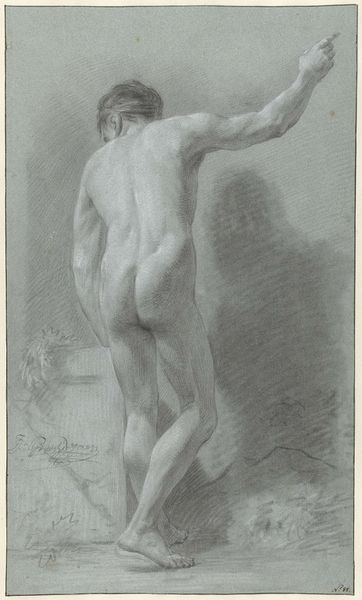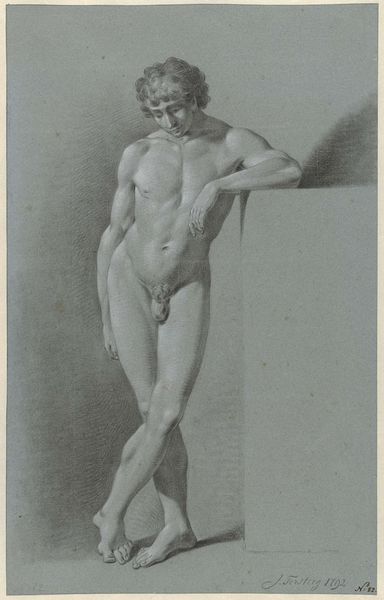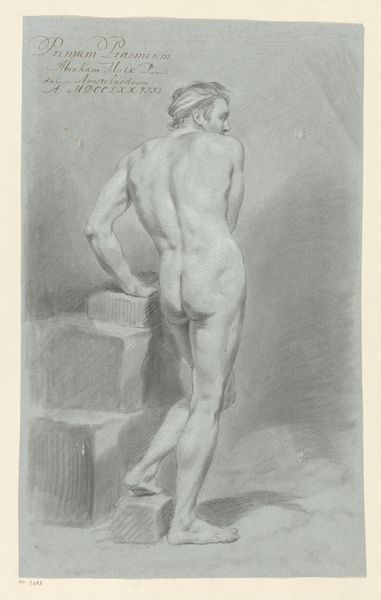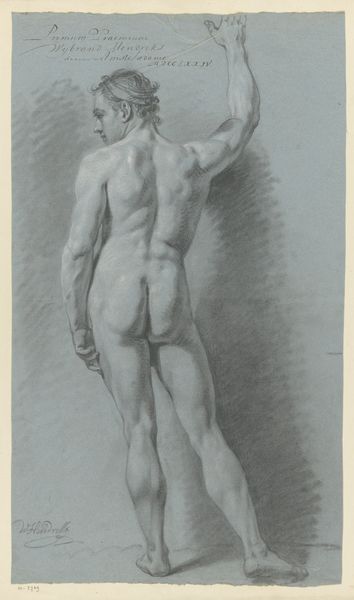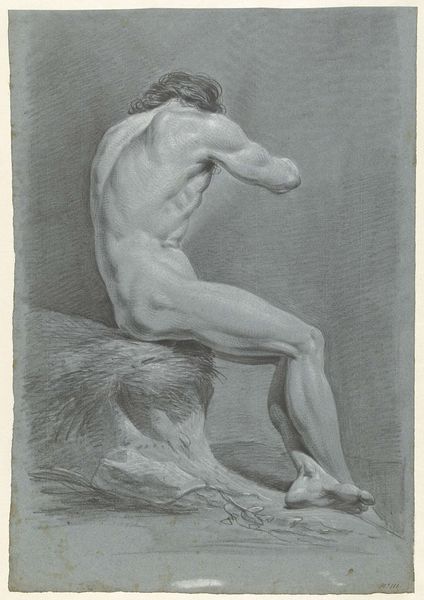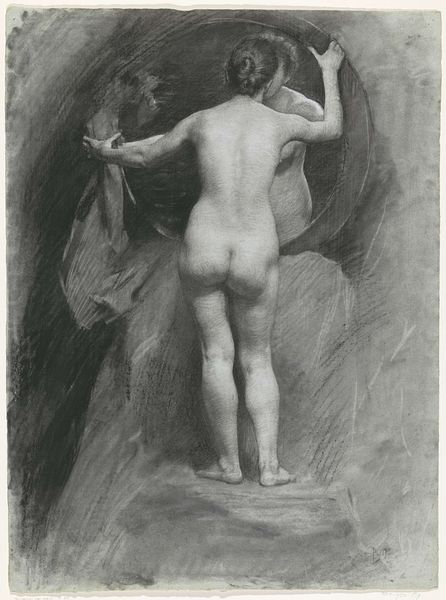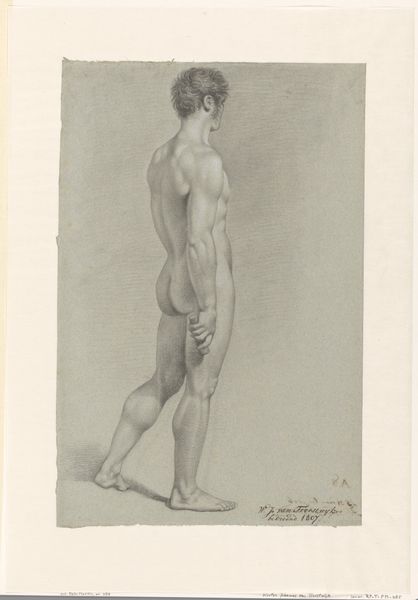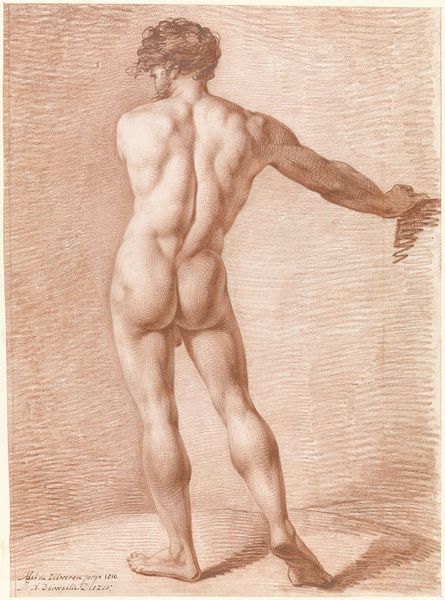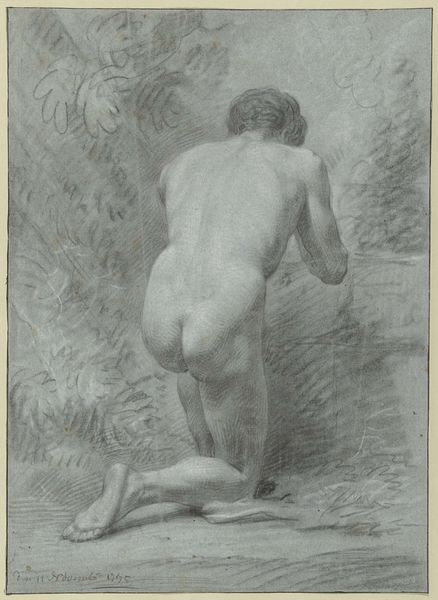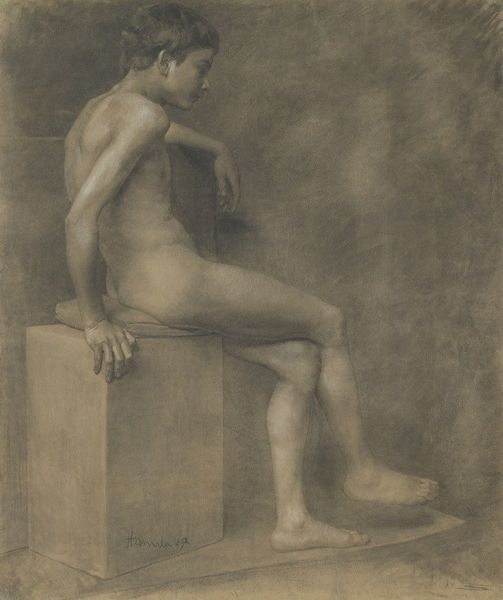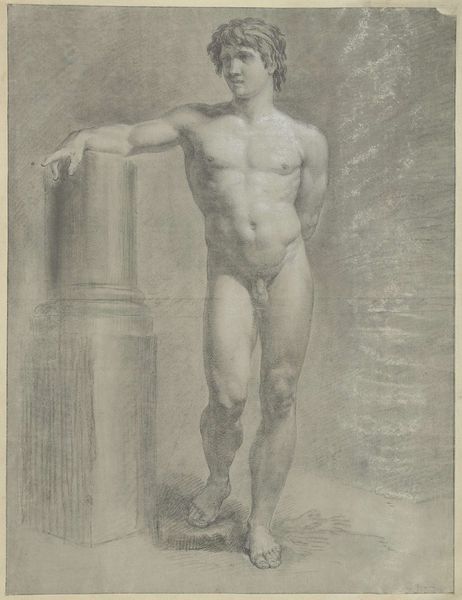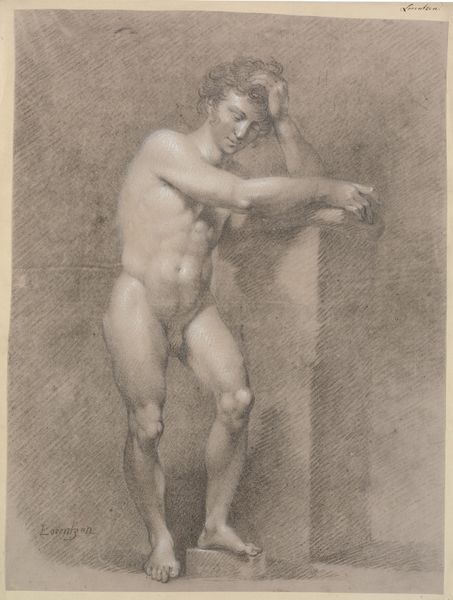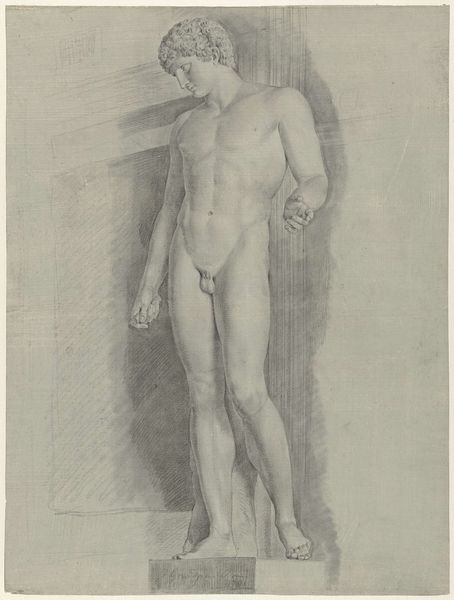
drawing, pencil
#
portrait
#
drawing
#
neoclacissism
#
light pencil work
#
pencil sketch
#
charcoal drawing
#
figuration
#
charcoal art
#
portrait reference
#
pencil drawing
#
underpainting
#
pencil
#
portrait drawing
#
tonal art
#
academic-art
#
charcoal
#
nude
Dimensions: height 529 mm, width 403 mm
Copyright: Rijks Museum: Open Domain
Editor: This drawing, "Standing Male Nude, Seen from the Back," by Jean Grandjean, was made between 1765 and 1781 using pencil. I’m struck by how the subject's posture seems so relaxed and yet self-contained. What do you see in this piece beyond the initial impression? Curator: I see the lingering echoes of classical ideals interwoven with the emerging social anxieties of the late 18th century. Notice how the idealized male form, reminiscent of ancient Greek sculpture, is rendered in a vulnerable, almost melancholic pose. It's as if the artist is simultaneously celebrating and questioning the dominant patriarchal narratives of the time. Who does this ideal serve? And who does it exclude? Editor: That's interesting. I hadn't considered the element of questioning. So, it's not simply a celebration of the male nude as a symbol of power? Curator: Not entirely. Look closely at the details. The soft pencil work, the slight tension in the back muscles, the averted gaze – they hint at an inner world, a psychological complexity that disrupts the stoic facade often associated with neoclassicism. The figure leans, almost yearning, yet remains isolated. This resonates with broader shifts of the Enlightenment era where societal structures came into question under new critical theory. How does this isolation strike you? Editor: It does feel lonely, almost, despite the strength implied in the physique. I’m now thinking about who would have been able to produce and consume this image during this time? Curator: Precisely. The creation and reception of such works were undoubtedly confined to a privileged, primarily male, elite. Examining art involves unveiling and challenging the dynamics of power that underpin its production and interpretation. In this way, can we now examine the work through a modern lens? Editor: I am certainly now approaching it from a more thoughtful perspective, aware of the nuances embedded within what seems at first glance to be simply an academic study. Curator: And that nuanced reading allows us to draw new perspectives to light. Art isn’t created in a vacuum; instead it acts as a mirror, reflecting cultural ideals and societal realities.
Comments
No comments
Be the first to comment and join the conversation on the ultimate creative platform.
